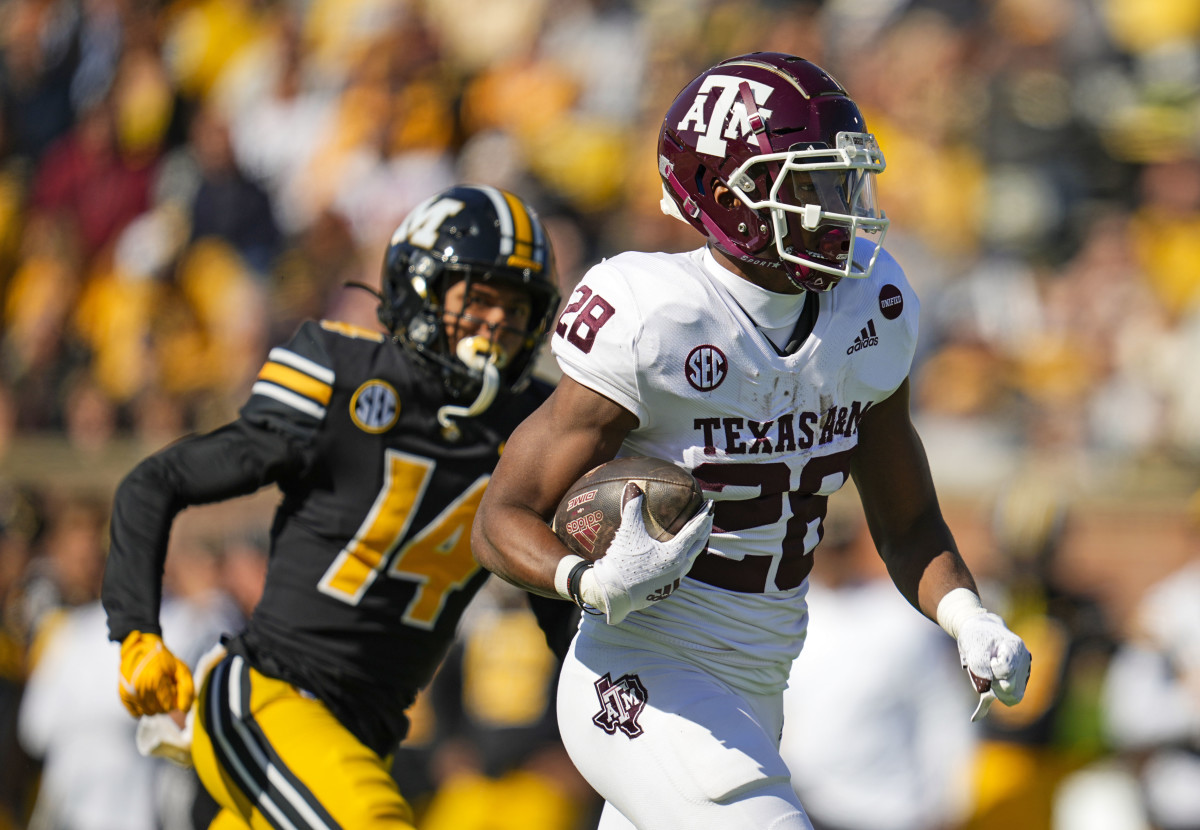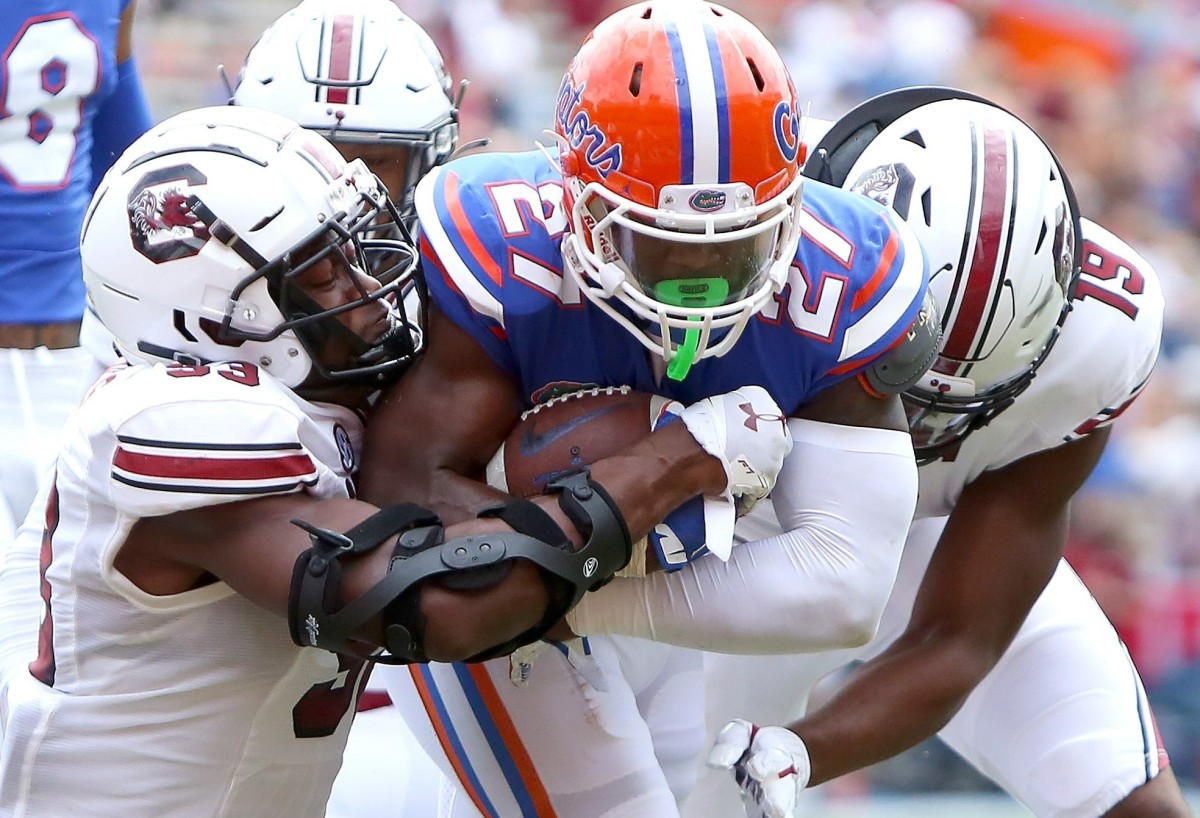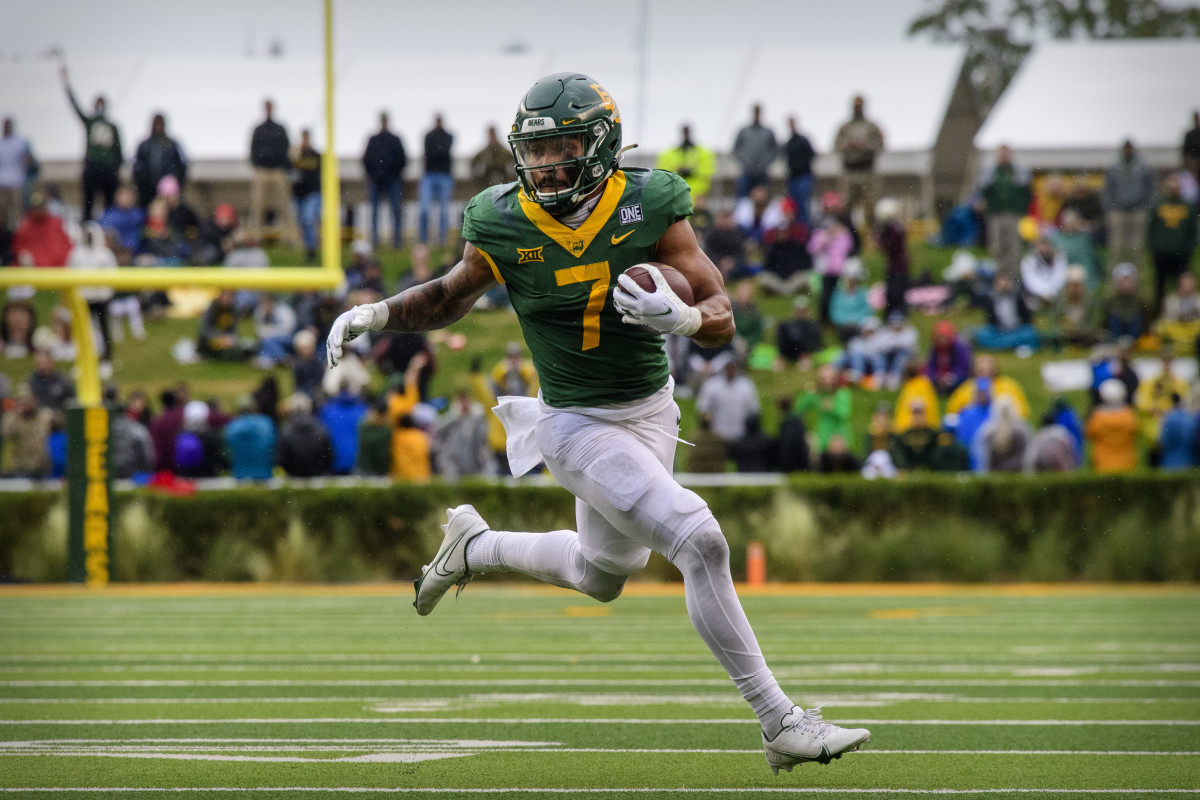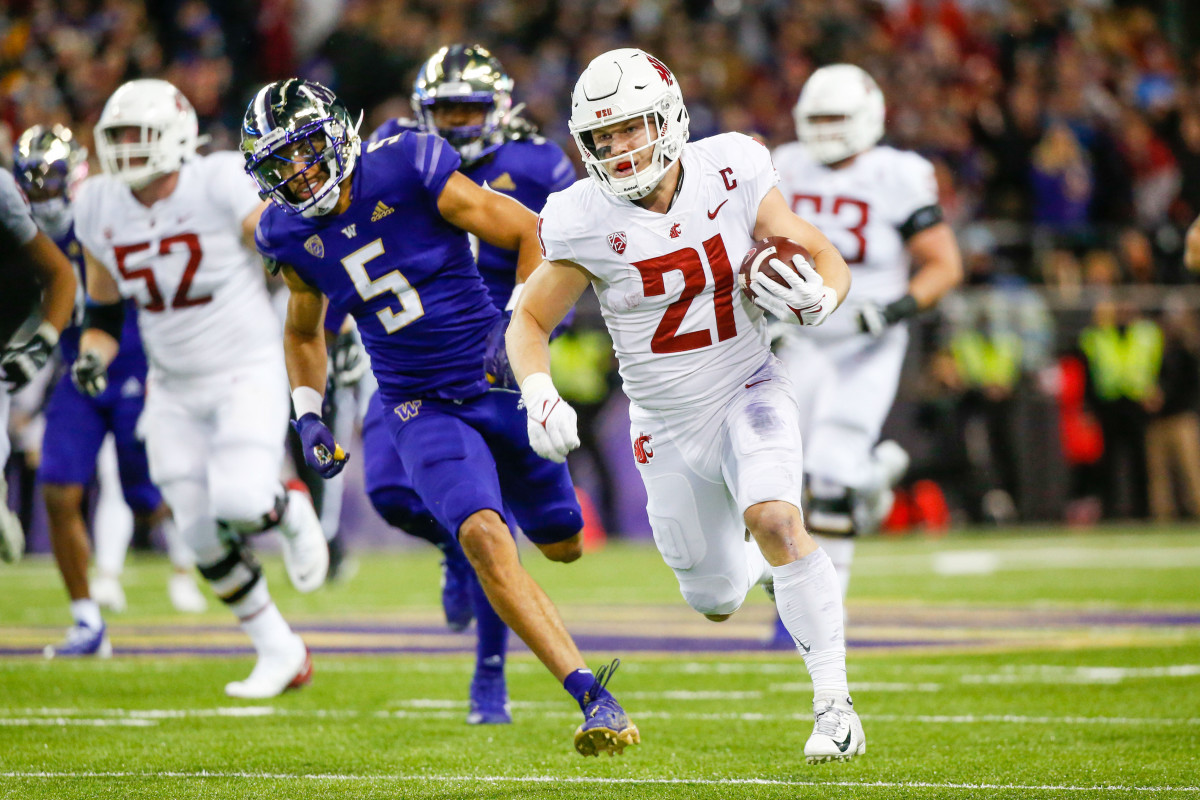Seahawks 2022 Combine Confidential: Running Backs
INDIANAPOLIS - Since general manager John Schneider and coach Pete Carroll joined forces with the Seahawks back in 2010, drafting running backs has become a near-annual tradition for the franchise.
Dating back to 2010, the first year Schneider and Carroll took over as the franchise's brain trust of football operations, Seattle has invested at least one pick in a running back in eight of its past 12 drafts. This includes using three picks on C.J. Prosise, Alex Collins, and Zac Brooks during the 2015 NFL Draft and selecting Rashaad Penny in the first round of the 2018 NFL Draft at No. 27 overall.
With short and long-term questions at running back, the Seahawks look poised to use one of their six selections to push that number to nine in April. As things currently stand, Penny will become an unrestricted free agent in two weeks and may be challenging to re-sign after a strong finish to the 2021 season. Meanwhile, starter Chris Carson's status remains uncertain coming back from neck surgery, potentially leaving the team short-handed with only DeeJay Dallas and Travis Homer as experienced options on the roster.
If there's a silver lining, with depth at a premium at the position for a team that values the ground game as much as anyone in the NFL today, the incoming 2020 draft class features a deep pool of talented, versatile ball carriers for Seattle to choose from if seeking reinforcements for its backfield for next year and beyond.
Here are four running back prospects who could be on Seattle's radar as targets in April's upcoming draft:
Isaiah Spiller

Despite playing an underwhelming line at times during his three seasons at Texas A&M, the 6-foot-1, 215-pound Spiller emerged as one of the more productive running backs in the SEC. Utilized as a feature back for most of his time on campus, he rushed for nearly 3,000 yards and 25 touchdowns while averaging a healthy 5.5 yards per carry for his collegiate career.
Though he's a bit on the taller side for a running back, Spiller consistently runs with a quality pad level and a low center of gravity working in and out of cuts, allowing him to weave through space with ease and slip through arm tackle attempts at the second level. Coupled with plus-ball carrier vision, he's an elusive enough runner to create yardage in congestion and operate with tight creases in front of him, knowing when to turn on the afterburners and when to feather the brakes.
In terms of being a complete back, Spiller did catch 74 passes for the Aggies, but he remains a work in progress as a receiving threat. He's also an unpolished pass protector technique-wise and doesn't always play to his size from a physicality standpoint to finish with authority and push the pile for extra yardage. That by itself may not make him a prime candidate for the Seahawks to draft, but his vision and cutting ability would fit in well with a zone-centric scheme.
Damien Pierce

Like many other college programs, Florida utilized a "by committee" approach in the backfield with multiple backs splitting carries over the past several seasons. As a result, Pierce never received a chance to be a feature back for the Gators, but he proved to be effective with his allotment of touches, rushing for 1,806 yards and 23 touchdowns on just 329 total carries.
Describing himself as an "angry" runner with bad intentions, the stocky 5-foot-9, 220-pound Pierce powers through defenders like a wrecking ball and leaves tacklers hanging on for dear life as he drags them for additional yardage. Aside from seeking out contact like a magnet and his decisive mentality picking running lanes between and outside the tackles, he has a well-rounded skill set, as he caught 19 passes for 216 yards and three touchdowns as a senior despite a criminally-low workload. He's also a quality pass protector who plays with the right mindset in that capacity.
Florida running back Dameon Pierce, another runner who spent time with #Seahawks at Senior Bowl, may have climbed into the top spot for most enjoyable combine interview so far discussing his style of play and who he models his game after. pic.twitter.com/yyYJ63Ej25
— Corbin K. Smith (@CorbinSmithNFL) March 3, 2022
More quick than fast, Pierce isn't a dynamic home run threat who will make a bunch of house calls after 50-plus yard runs. But his energetic, powerful style should fit both zone and gap schemes and his propensity for carrying defenders with him will appeal to teams such as the Seahawks who favor punishing runners. After mystifyingly seeing limited carries in college, he has tons of tread left on his tires and could be a far better player in the NFL.
Abram Smith

Not many linebackers convert to running back late in their college career, but calling Smith's transition back to offense before his senior season at Baylor a success would be a tremendous understatement. Immediately adding punch to the Bears' rushing attack, he burst onto the scene by eclipsing 1,600 rushing yards and scoring 12 touchdowns to earn Second-Team All-Big 12 honors.
While Smith doesn't plow over defenders quite like Pierce, he's a violent, downhill back in his own right who exhibits outstanding contact balance to brush off tacklers and rack up extra yardage powering through traffic. As the player noted at the combine, his prior background as a defensive player helps him make smart choices hitting running lanes hard and capitalize on poor run fits. He also proved himself to be an underrated receiver, including catching a 20-yard touchdown in the Senior Bowl.
Abram Smith, Baylor linebacker-turned-running back who met with #Seahawks, hopes to prove to critics he has better speed and hands than advertised this week at combine. pic.twitter.com/tld96Oe679
— Corbin K. Smith (@CorbinSmithNFL) March 3, 2022
If there's a downside to Smith's game, while he will have a chance to prove critics wrong in Indy, he lacks the second-gear necessary to create many explosive runs at the next level and possesses average-at-best elusiveness in space. Those athletic limitations could keep him on the board well into day three of the draft, but with a skill set similar to Chris Carson, he would mesh well with Seattle's scheme as a hard-nosed zone runner.
Max Borghi

Drawing comparisons to Panthers do-it-all star Christian McCaffrey, Borghi earned much of his acclaim with the Cougars for his receiving prowess, which shouldn't come as a surprise playing in an Air Raid offense for Mike Leach and Nick Rolovich. In four seasons with the program playing with multiple quarterbacks, he caught 156 passes for 1,134 yards and nine touchdowns.
But Borghi offers far more value as a runner than some draftniks realize. Even in Leach's offense where Washington State rarely ran the ball, he rushed for 817 yards and 11 touchdowns while averaging 6.4 yards per carry in 2019. As a senior, he again surpassed 800 yards and scored 12 touchdowns on the ground. He runs with adequate contact balance to shake off oncoming tacklers and possesses top-flight acceleration, allowing him to get to top speed quickly and do damage at the second and third level. He also has excellent vision and instincts reading his blocks, which should allow him a good chance to succeed in a pro-style system.
Washington State running back Max Borghi, who has met with the #Seahawks in pre-draft process, has no doubts he can excel in a pro-style offense and feels he's ready to be "unleashed" by whoever drafts him. pic.twitter.com/fDCjKx3SLt
— Corbin K. Smith (@CorbinSmithNFL) March 3, 2022
Of course, at 211 pounds, Borghi isn't a power back by any sense of the word and despite his excellent long speed, he isn't the shiftiest of runners working in space when he needs to create his own yardage. If he can grow as a pass protector and find a way to sprinkle in a bit more physicality to his game finishing off runs, he could develop into a steady rotational back at the next level and Seattle would be a good landing spot scheme-wise keeping him in state.
